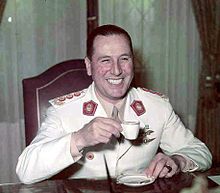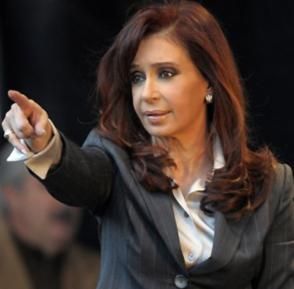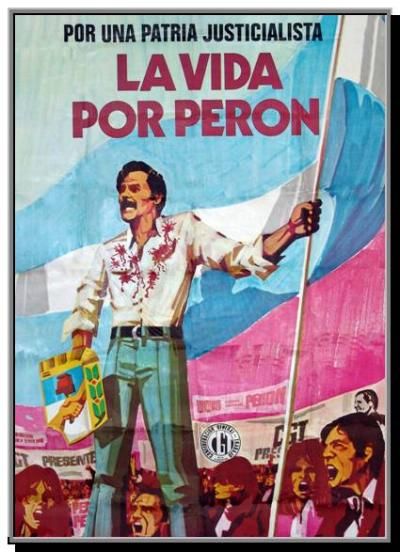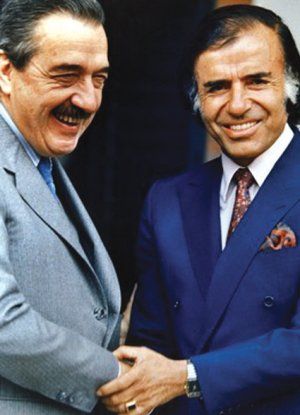By: inoljt, http://mypolitikal.com/
Argentina is a country famous for football, for its invention of tango, and for its great beef.
Amongst economists, however, Argentina is also famous for its economic slide backwards over the past century.
More below.
Before World War I, Argentina had one of the ten biggest economies in the world. Argentinean living standards were amongst the highest in the world. It looked like Argentina would become a modern-day Australia or Canada.
That didn’t happen. Today Argentina is widely considered a Third World country. Its income, relative to the rest of the world, has plummeted. In 2001 Argentina suffered the greatest economic crisis in its history.
What happened?
There are a myriad of reasons. Wikipedia provides a pretty good overview of the gritty details, which this post won’t get into. But underneath the rush of events and crises there are several underlying factors. These factors were the catalysts for the events and the century-long decline of Argentina’s economy.
The Endless Coups
Military coups are the primary and most important factor behind Argentina’s economic decline.
Argentina’s people are very left-wing, and when left to their own devices they will generally elect a left-wing president. However, like many Latin American countries, Argentina also has a very strong right-wing minority. This conservative minority constitutes the business elite of the country, and they generally loathe the left-wing presidents that the people will select (sometimes for good reasons, sometimes for not-so-good reasons).
The current president, Cristina Fernández de Kirchner, is a great example of this dynamic. The Buenos Aires elite hate Cristina and think that she is an awful, awful, and stupid president.
And yet Cristina won 54% of the vote in her last presidential election. The second-best candidate got just 17%. Obviously lots of Argentinians support her.
So in a free and fair election the Argentinian elite will get a left-wing president whom they loathe.
That’s where the military comes in.
For decades, every time that Argentina elected a person too far to the left for the generals, the military would charge in and kick him or her out with the support of the business elite (and often the United States).
This did enormous damage to the country. In fact, it’s hard to overstate just how bad the coups were for Argentina. In 1930, for instance, Argentina was a democracy with a popularly-elected president from what at the time would be considered the left. At the time, it was one of the most progressive countries in the world. Then General José Félix Uriburu assaulted the Casa Rosada, disposing President Hipólito Yrigoyen, and ushered in an “Infamous Decade” of military rule and stolen elections. This was a turning point in Argentinian history. It would be more than half a century before democracy recovered, and meanwhile the political chaos crushed the economy. If democracy had survived in 1930, Argentina might be as wealthy as Italy today.
One coup in particularly deserved to mentioned: the last and worst one. This occurred in 1976. Once again there was a president, the incompetent Isabel Perón, and in the usual pattern the military disposed of her:
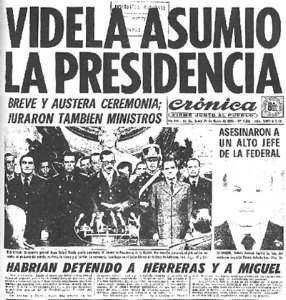
<!–more–>
The generals proceeded to mismanage the economy (as they had in the past), commit the worst human rights violations in Argentinian history, and – to top it off – lose a mad war against the United Kingdom over a pair of islands.
In fact, the loss of the Malvinas War is one main reason that there are no more coups today (the other is the end of the Cold War). It’s the reason why Argentina returned to democracy. Argentina’s military lost a huge amount of prestige with it. People no longer felt any respect for an institution which had been humiliated in a war.
The Failure of the Left and of Peronism
There’s been a lot of blame placed on the right so far. But the left is also to blame (although not as much as the right).
The problem is that while Argentinians as a whole have supported left-wing presidents, those presidents have generally failed with regards to economic policy. Isabel Perón, the aforementioned president disposed by a coup, presided over a terrible period of hyperinflation and terrorism. The problem is that whenever a left-wing president failed at managing the economy, the people didn’t get a chance to kick him or her out. Instead the military would always intervene and mount a coup. So the people never got to learn that Peronism was a failure.
What is Peronism? It’s the philosophy and movement of Juan Perón, the man pictured at the beginning of this post. Peronism is a hugely important part of Argentina’s history; you can’t talk about Argentinian politics without mentioning it. Even today most Argentinian politicians label themselves as Peronists (which makes the term lose a lot of its original meaning, ironically).
Perón was a hugely popular leader of Argentina during the late ’40s and early ’50s, until he was disposed in a coup. During the following decades Perón, in exile in Spain, maneuvered to place friendly presidents in power (they were then disposed in more coups). In the early ’70s Perón was able to successfully able to return to Argentina, where he became president for a year before dying at a terrible time. His third wife Isabel, who took over afterwards, was then disposed in yet another coup, as has been mentioned before.
Although Perón himself was from the military and had fascist tendencies, his philosophy Peronism is an undeniably left-wing philosophy. It praises the Argentinian working class and hammers the elite and foreign corporations. Peronism is big on nationalization and unionization, and under Perón unions became hugely influential (and still are).
Perón (and his second wife Evita Perón) is a hero in Argentina, but outside the country he is regarded much more negatively for admiring fascism, for womanizing (he met his third wife as a nightclub dancer, which might have something to do with why she was a failure as president), and for his unsuccessful economic policies.
While Argentinians continue to hold Peronism in high regard, it seems to have hurt the economy in the long run. Peronism seems to have been linked to inflation; before Perón inflation was not a factor in Argentina. Yet inflation started under Perón’s government in the ’50s, got steadily worse, and turned into hyperinflation during the ’80s. Perón also spent a lot of money on both social programs Argentina couldn’t afford and on making Argentina produce shoddy industrial goods which nobody wanted to buy. The nationalized corporations, such as the state telephone company, also proved generally inefficient. Argentina ended up getting into debt. Like the inflation, the debt got steadily worse. It ended up in the default of 2001, the worst economic crisis in Argentina’s history.
It’s arguable that Argentina would have been better off if Peronism hadn’t existed.
Conclusions
The picture above shows two former presidents of Argentina. To the left is the much-beloved Raúl Alfonsín (he is loved for fighting for democracy during the last military dictatorship). To the right is the much-hated Carlos Menem.
The two presidents above are connected with the worst periods of Argentina’s economic history. While Alfonsín was a great at fighting for human rights, he was terrible at managing the economy. Under Alfonsín Argentina underwent its worst hyperinflation in history. The inflation didn’t start with Alfonsín (it started with Perón), but his efforts fighting inflation ended up making it much worse. Alfonsín’s successor Menem implemented neoliberal policies and successfully ended the hyperinflation. Unfortunately, his currency board (which pegged the Argentinian peso and the U.S. dollar at a 1-to-1 ratio) directly caused the 2001 economic crisis. During the presidency of Menem himself the economy did decently; it was under the next president that the bottom fell out.
All in all, both the left and the right are to blame for Argentina’s economic decline. The right is to blame for its coups, which caused half-a-century of political chaos. The left is to blame for its unsuccessful economy policies, especially Peronism, which ended up sending Argentina down the wrong economic road. But here blame falls on the right again, for when Argentinians did test out right-wing economic policies with Menem in the ’90s, his failed currency board led to economic disaster.
The great problem, and the main reason why Argentina has declined so, is that the military never let Argentinians realize for themselves that they were going down the wrong road. Every time a left-wing president took power and failed, it was they – not the people – who kicked out the president. With respect to Argentina, the great hope for optimism today is that the days of military coups are long over and gone forever.
